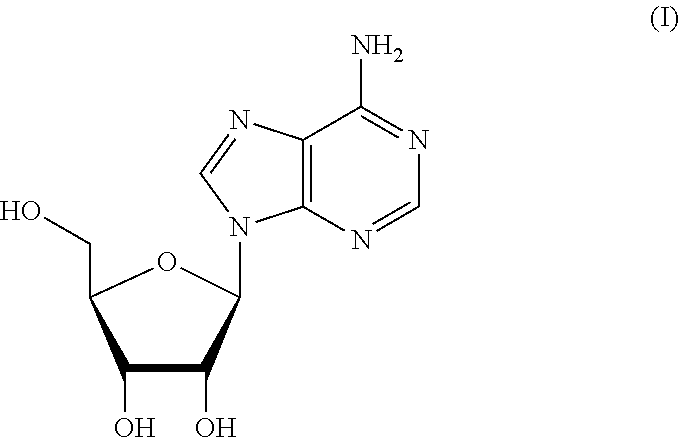Cosmetic compositions
a composition and composition technology, applied in the field of cosmetic compositions, can solve the problems of skin damage, oxidative stress and inflammation, limit cell division, etc., and achieve the effects of reducing pigmentation in cells, reducing oxidative damage and inflammation, and increasing the production of dermal proteins
- Summary
- Abstract
- Description
- Claims
- Application Information
AI Technical Summary
Benefits of technology
Problems solved by technology
Method used
Image
Examples
example 1
Efficacy of Active Ingredients
[0096]In vitro bioassays described below were used to determine the efficacy of Rhododendron ferrugineum leaf (alpine rose) extract, Oenothera biennis seed extract (evening primrose) extract, trifluoroacetyl tripeptide-2, tetrahexyldecyl ascorbate, and Menyanthes trifoliate leaf extract.
[0097]Antioxidant (AO) Assay:
[0098]An in vitro bioassay that measures the total anti-oxidant capacity of any one of the ingredients, combination of ingredients, or compositions having said combinations disclosed in the specification. The assay relies on the ability of antioxidants in the sample to inhibit the oxidation of ABTS® (2,2′-azino-di-[3-ethylbenzthiazoline sulphonate]) to ABTS®+ by metmyoglobin. The antioxidant system of living organisms includes enzymes such as superoxide dismutase, catalase, and glutathione peroxidase; macromolecules such as albumin, ceruloplasmin, and ferritin; and an array of small molecules, including ascorbic acid, α-tocopherol, β-carotene...
example 2
Delivery Vehicle for Active Ingredients
[0110]Various combinations of the active ingredients discussed above in Example 1 were found to be stable and effective in various delivery vehicles described in Tables 3-5. Further, these vehicles can be combined with additional ingredients to prepare an end-product such as the creams and serums identified in Tables 6-9 in Example 3.
TABLE 3% ConcentrationIngredients(by weight)water58glycerin11.9polydimethylsiloxane2.7triethanolamine0.9polymethyl methylacrylate0.72acrylates / C10-30 alkyl0.1acrylate crosspolymerdisodium ethylenediaminetetraacetic0.1acidactive ingredients*up to 5excipients**q.s.*Rhododendron ferrugineum leaf (alpine rose) extract, Oenothera biennis seed extract (evening primrose) extract, trifluoroacetyl tripeptide-2, tetrahexyldecyl ascorbate, and Menyanthes trifoliate leaf extract.**structuring agents, fragrances, and preservatives. Alternatively, the amount of water can be varied upwards by removing the excipients.
TABLE 4% Conc...
example 3
Product Formulations
[0111]The formulations in Tables 6-8 incorporate various combinations of the actives in Example 1 and the delivery vehicles in Example 2. Each of these formulations are oil-in-water emulsions. Table 6 is designed as a skin cream. Table 7 is designed as an eye cream for application around the periorbital area of a person (e.g., under the eye bags and circles and on “crows feet”). Table 8 is designed as a serum.
TABLE 6*% ConcentrationIngredient(by weight)Water58Glycerin11.92Glyceryl Sterate4.30Pentylene Glycol4.28Ethylhhexyl Isononanate3.15Dimethicone2.70Cetyl Alcohol2.70Butyrospermum Parkii (Shea) Butter2.20Zea Mays (corn) Germ Oil1.94Cetyl Phosphate1.58Cetearyl Alcohol1.44Tetrahexyldecyl Ascorbate1.00Bifida Ferment Lysate0.99Triethonolamine0.90Polymethyl Methacrylate0.72Ceteareth-330.68Oenothera Biennis (evening primrose)0.25ExtractMethylparaben0.20Acrylate cross-linked polymer C10-C300.25Fragrance0.1Propylparaben0.1Disodium EDTA0.1Rhododendron Ferrugineum extrac...
PUM
 Login to View More
Login to View More Abstract
Description
Claims
Application Information
 Login to View More
Login to View More - R&D
- Intellectual Property
- Life Sciences
- Materials
- Tech Scout
- Unparalleled Data Quality
- Higher Quality Content
- 60% Fewer Hallucinations
Browse by: Latest US Patents, China's latest patents, Technical Efficacy Thesaurus, Application Domain, Technology Topic, Popular Technical Reports.
© 2025 PatSnap. All rights reserved.Legal|Privacy policy|Modern Slavery Act Transparency Statement|Sitemap|About US| Contact US: help@patsnap.com

